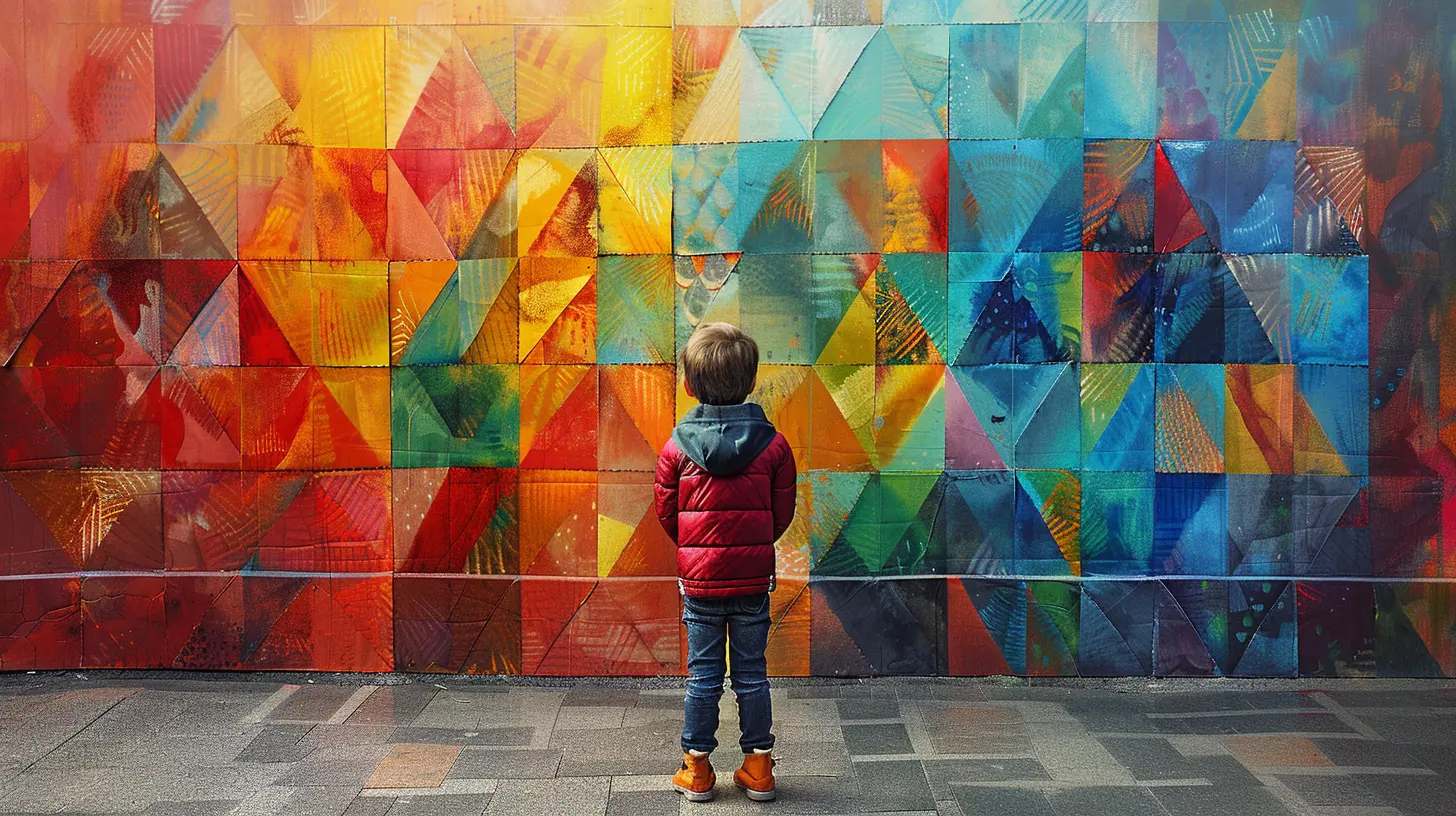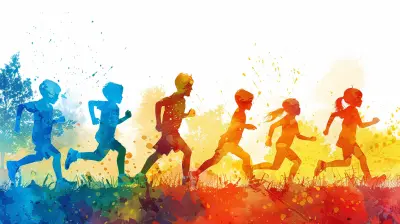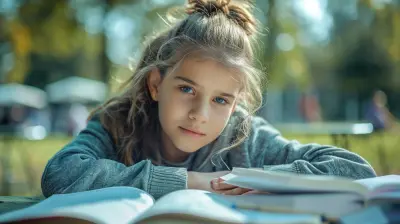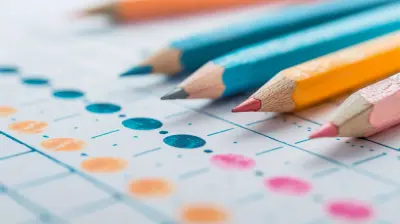Using Art to Teach Geometry and Spatial Awareness
13 August 2025
Geometry and spatial awareness are fundamental concepts in our daily lives. From understanding the shapes in our surroundings to solving complex design problems, these skills are crucial. But let’s be honest—learning about angles, symmetry, and spatial relationships from a textbook can be a snooze-fest for many students.
What if we could make it fun? That’s where art comes in! Art and geometry go hand in hand, and using creativity to teach mathematical concepts not only makes learning engaging but also helps students grasp abstract ideas more intuitively.
In this article, we’ll dive into how art can be a powerful tool for teaching geometry and spatial awareness. We’ll explore practical methods, benefits, and real-world applications that make these concepts more accessible and enjoyable.

Why Use Art to Teach Geometry?
Think about it—art is full of geometric patterns, symmetry, and spatial relationships. Whether it’s the intricate designs in ancient architecture, the perspective in Renaissance paintings, or the abstract compositions in modern art, geometry plays a crucial role in creative expression.By integrating art into geometry lessons, students can:
- Visualize mathematical concepts in real-world contexts
- Engage creatively, making learning more enjoyable
- Improve spatial reasoning, which is essential for fields like engineering, design, and architecture
- Boost problem-solving skills, as creating art often involves thinking critically about space and form

The Connection Between Art and Geometry
Geometry is not just about circles, squares, and triangles—it’s about patterns, symmetry, proportion, and perspective. Artists have been using geometric principles for centuries to create visually appealing compositions. Let’s break down some key geometric concepts and how they appear in art:1. Shapes and Forms
Shapes are the building blocks of both geometry and art. Whether it’s a simple triangle in a child’s drawing or a complex geometric pattern in Islamic art, understanding shapes helps students see the connection between math and creativity.Activity Idea: Shape Collage
Give students cut-out shapes (triangles, squares, circles, etc.) and ask them to create an artwork using only those shapes. This will help them recognize how basic geometric forms can be combined to create more complex designs.2. Symmetry and Balance
Ever noticed how mandalas have perfect symmetry? Or how classical paintings feel "balanced"? That’s because symmetry and balance are key principles in both art and geometry.Activity Idea: Symmetrical Drawing
Ask students to fold a paper in half and draw on one side, then mirror the design on the other half to create a symmetrical artwork. This simple exercise helps reinforce the concept of symmetry in a visual and hands-on way.3. Perspective and Depth
Artists use perspective to create the illusion of depth in a two-dimensional space. Techniques like one-point and two-point perspective are rooted in geometric principles.Activity Idea: Perspective Drawing
Teach students how to draw a cityscape using one-point perspective. Guide them to draw a horizon line, vanishing point, and parallel lines to create buildings that appear three-dimensional. This activity makes abstract spatial concepts more tangible.4. Tessellations and Patterns
Remember those mesmerizing Escher drawings? They’re based on tessellations—repeating patterns of shapes without gaps or overlaps. Geometry plays a huge role in pattern design across various art forms, from tile mosaics to textile prints.Activity Idea: Create a Tessellation
Have students design their own tessellation patterns by cutting and flipping paper shapes. This not only reinforces geometric transformations (translation, rotation, reflection) but also encourages creative thinking.
How Art Enhances Spatial Awareness
Spatial awareness is the ability to understand and manipulate objects in space. It’s a crucial skill for numerous professions—architects use it to design buildings, surgeons use it during operations, and athletes use it to judge distances and movements.By incorporating art into lessons, students develop stronger spatial reasoning skills in a natural and enjoyable way. Here’s how:
1. Hands-On Learning
When students physically manipulate materials—whether it’s molding clay, arranging shapes, or drawing forms—they strengthen their spatial understanding. Creating 3D sculptures, for example, helps in visualizing volume and proportions.2. Thinking in Multiple Dimensions
Flat drawings on a page don’t always translate well into real-world understanding. When students work with sculptures, perspective drawings, or digital modeling, they train their brains to think in three dimensions.3. Strengthening Problem-Solving Skills
Artistic creation often involves trial and error—what happens if a pattern doesn’t line up? Or if a perspective drawing looks off? By working through these challenges, students develop problem-solving skills that translate into better geometric reasoning.
Real-World Applications of Art and Geometry
Art-based geometry education isn’t just about making math fun—it builds real-world skills that are useful across numerous fields:- Architecture & Engineering – Understanding shapes, structures, and spatial relationships is essential for designing buildings and bridges.
- Graphic & Fashion Design – Patterns, symmetry, and proportions are all crucial in creating visually appealing designs.
- Digital Animation & Game Design – 3D modeling and animation rely heavily on geometric transformations and spatial awareness.
- Medical Fields – Surgeons, radiologists, and physical therapists rely on spatial skills to understand the human body and medical imaging.
Tips for Teachers: Bringing Art into Geometry Lessons
Want to incorporate art into your geometry lessons but don’t know where to start? Here are some practical tips:1. Use Art Supplies – Provide hands-on materials like clay, paper, and paint to bring lessons to life.
2. Incorporate Technology – Use digital tools like CAD software or interactive geometry apps for modern learning.
3. Encourage Creative Projects – Let students choose how they want to express geometric concepts—whether through painting, sculpture, or digital art.
4. Highlight Famous Examples – Show works from artists like M.C. Escher, Leonardo da Vinci, and Piet Mondrian to demonstrate geometric principles in action.
5. Make It Collaborative – Group projects encourage teamwork and different perspectives on spatial reasoning.
Conclusion
Teaching geometry and spatial awareness through art is not just effective—it’s transformative. When students engage with math creatively, they develop a deeper understanding and appreciation for the subject. By integrating art into lessons, educators can foster a love for learning, enhance problem-solving abilities, and equip students with essential real-world skills.So, why not ditch the dull worksheets and bring out the paintbrushes? Geometry doesn’t have to be intimidating—it can be a masterpiece waiting to be created.
all images in this post were generated using AI tools
Category:
Art EducationAuthor:

Olivia Lewis
Discussion
rate this article
1 comments
Nymira Alexander
Thank you for this insightful article on integrating art into geometry education! Your innovative approach highlights the importance of creativity in learning. I appreciate how you emphasize spatial awareness through artistic expression—it's a wonderful way to engage students and deepen their understanding of mathematical concepts.
August 27, 2025 at 11:09 AM

Olivia Lewis
Thank you for your kind words! I'm glad you found the integration of art and geometry valuable for enhancing creativity and spatial awareness in education.


